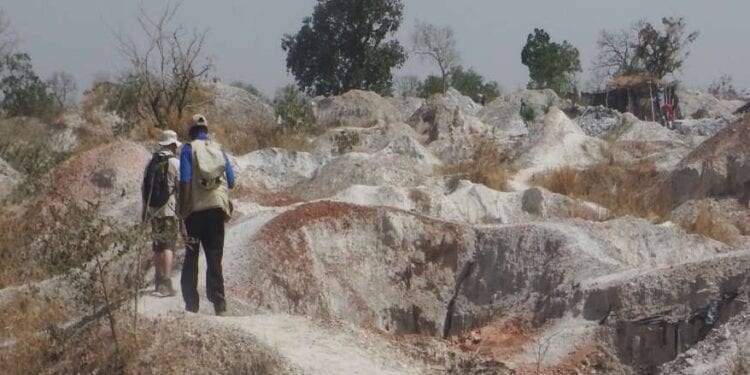Early Phase Programme To Test Mali Gold Theory
Marvel Gold Limited (ASX: MVL) has commenced drilling at its Lakanfla Gold Project in western Mali.
A multi-purpose reverse circulation/diamond drill rig has been mobilised for the drill programme, which is expected to comprise approximately 3800m.
Executive Director, Chris van Wijk, said Lakanfla hosts a significant number of active and historic artisanal gold workings which are coincident with major geochemical and gravity anomalies.
Significantly, there is evidence of ground collapse at surface, indicative of karst (or cave-like) voids at depth within carbonate rock units. This is geologically analogous to the 4.5Moz Yatela deposit some 35km to the north-west and also the Sadiola FE3 and FE4 pits which are around 3km to the north-west of the license boundary.
The intention of this first phase drill programme is to prove the existence of a karst and identify the potentially mineralised areas of the gravity lows. Subject to the results, it is likely that follow-up drill programmes will then be required, using the information gathered in this first phase, to vector in on potentially economic concentrations of gold mineralisation.
“We are incredibly excited by the exploration potential at Lakanfla and look forward to our maiden drill program to test the karst theory,” Mr van Wijk said.
“We have designed this programme to confirm that dissolution processes have taken place and to maximise the chances of intersecting mineralisation around the 7km strike of the gravity lows surrounding the granite intrusion.
“Lakanfla’s proximity to Sadiola means that any discovery will be economically significant for Marvel shareholders.”
Since announcing the earn-in joint venture for Lakanfla, the ompany has undertaken a review of historical geophysical data including the results of gravity, magnetics and induced polarisation surveys.
“These datasets have been reprocessed to further refine planned drill targets.”
The Ccmpany will also be carrying out passive seismic surveys over the gravity lows at Lakanfla. Passive seismic surveys are used to identify density contrasts between various lithologies up to 700m below the surface. The company believes that the density contrast between dissolved carbonates and fresh rock can be used to model the base of the gravity lows in 3D. This data can then be calibrated against the drill results to aid target generation for follow-up drilling.












